How to Backup NAS Devices Using Online Backup Software in 2025: Data Storage Redundancy
It’s easy to think your NAS is safe and that simply having one is all you need. However, if you want to protect your data as much as possible, you should learn how to backup NAS devices to the cloud.
A network-attached storage (NAS) device can have many uses, including media storage for home users, a backup server for a small business, or even as part of the unstructured data management tools many larger corporations need. Regardless of why you need one, you should always ensure a NAS backup so you don’t lose all that precious data. In this article we’ll dive into how to backup NAS to cloud and other online backup software.
Key Takeaways:
- Backing up your NAS is important if you want to keep the data safe.
- Most NAS operating systems have a decent backup manager for cloud backups.
- IDrive is a great online backup service that supports all kinds of NAS devices.
For this guide, we’ll assume you already have a NAS set up, with hard drives and an operating system installed. If you want to start with the basics, check out: what is NAS guide.
You’ll also need a cloud storage provider to store your NAS data. Whether it uses hot or cold storage, is a zero-knowledge provider or has an option to back up a mobile device is up to you, but we’ll go through some of the best providers that work well with a NAS device in a bit.
-
03/21/2022
Updated to include step-by-step guides for a Synology NAS with Google Drive and any NAS with IDrive.
Why Should You Use a NAS Backup for Your Devices?
NAS is a great way to store backup data from a selection of devices. You won’t need to pay a monthly subscription, you can choose how much redundancy you want and it can work as a personal cloud storage server if your drive capacity is high enough.
However, your NAS backup solution is still vulnerable to physical damage, like a fire or flood. A ransomware attack can also destroy all your data, and cybercrime is no joke. A good NAS backup system can solve these issues, or at least drastically reduce the risk.
The Best Network-Attached Storage Backup Software
As long as your cloud storage software works with your NAS, a backup is easy to make. However, getting good value for money, strong security and reliable storage is also important for any backup.
- IDrive — Cheap and easy-to-use storage that works with any NAS
- CloudBerry Backup –Versatile backup manager, if you’re willing to learn how to use it
- Backblaze B2 — Professional IaaS storage that’s compatible with most devices
IDrive is our favorite backup provider and the best online backup for nonprofits. It’s easy to use. Once it’s set up, you can more or less forget about it, and it works with any device that can be mapped to your PC. Read our full list of the best cloud backup services for NAS to learn more.
Although it doesn’t provide storage, CloudBerry Backup (read our CloudBerry Backup review) is a great way to consolidate backups across multiple devices. It also gives you access to cloud computing storage providers, which offer an inexpensive way to store lots of data.
One affordable provider is Backblaze B2 (read our Backblaze B2 review), which is cheap and works well with many NAS operating systems.
How to Use Synology Cloud Backup to Backup NAS to Google Drive
Pretty much every NAS device has access to a dedicated backup manager, such as Hyper Backup and Cloud Sync with Synology. We’ll be showing you how to back up to Google Drive with Hyper Backup, but this method will work with many NAS and cloud storage providers, as most use similar steps. For a more detailed guide, check out our list of best cloud backup for Synology.
- Open Hyper Backup
To start, you’ll need to open Hyper Backup. If this isn’t already on your device, you can get it from the package center.
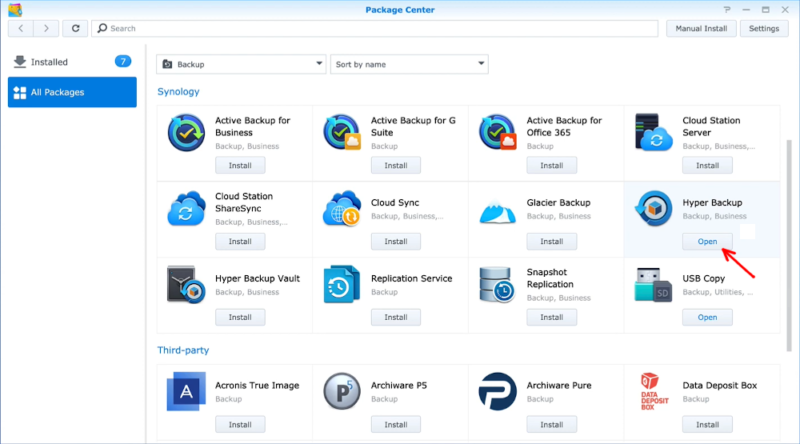
- Open the Backup Wizard
To create a backup in Hyper Backup, click the plus sign in the bottom left corner.
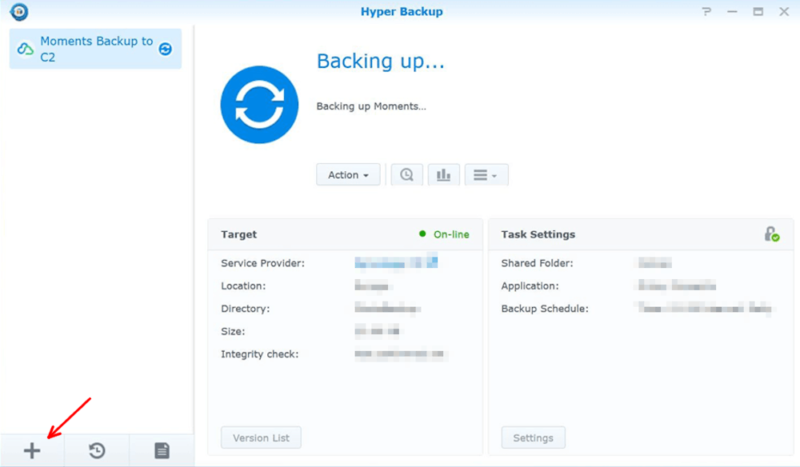
- Select Your Backup Destination
Choose your backup destination from the list. We’re using Google Drive, but you can pick any compatible cloud storage service or even a second NAS device. You’ll need to sign in to your chosen service and give your NAS permission to use the storage space.
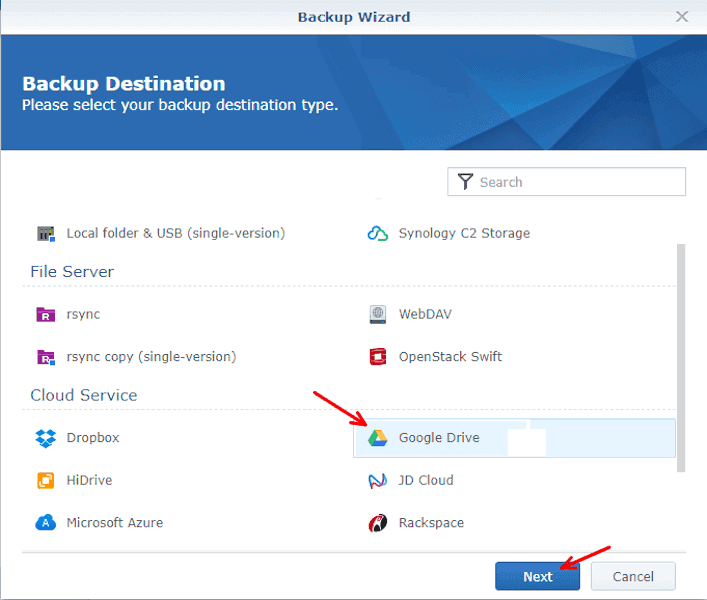
- Set Your Backup Destination Settings
Now you can choose a directory and folder. You’ll be able to find any backup data stored by Hyper Backup inside this folder.
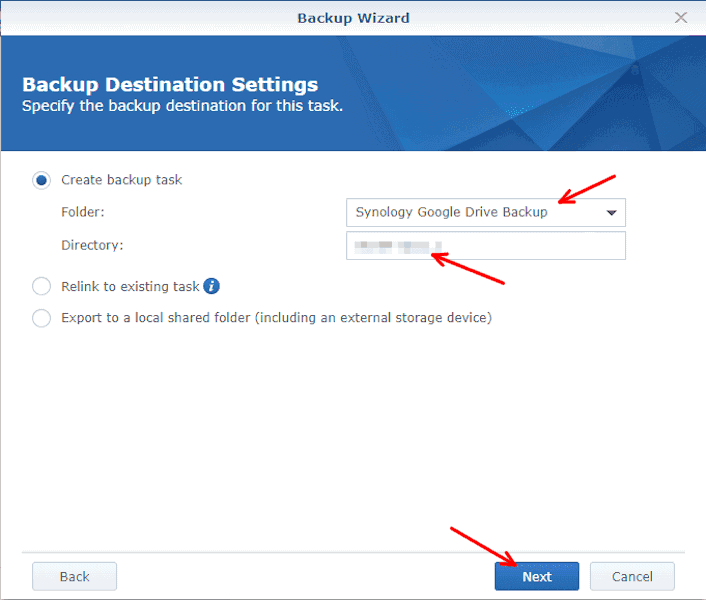
- Add Folders and Applications to the Backup
The next two pages let you choose which folders, volumes and applications will be backed up. You can select everything or set up more complex backup solutions, like having sensitive data stored in a dedicated offsite backup or using cold data storage for file data that doesn’t need regular access.
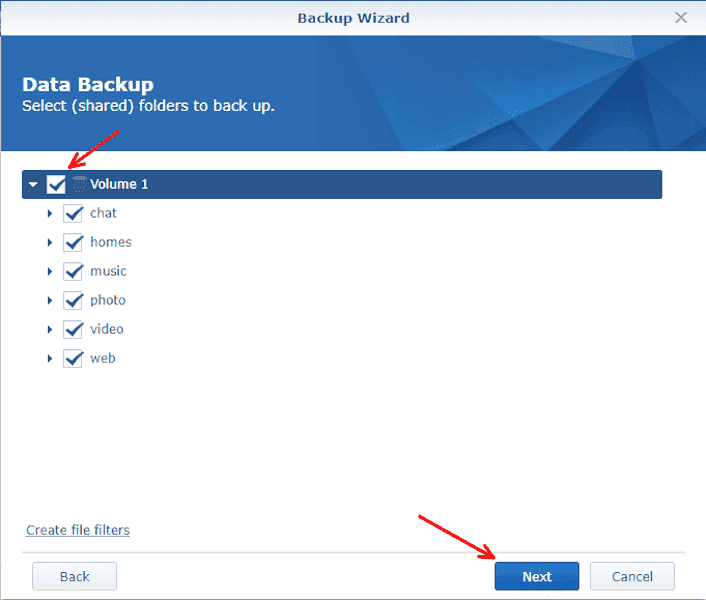
- Manage Your Backup Settings
The backup settings step lets you add extra details to logs and notifications, file compression, a backup schedule and even zero-knowledge encryption for extra data security.
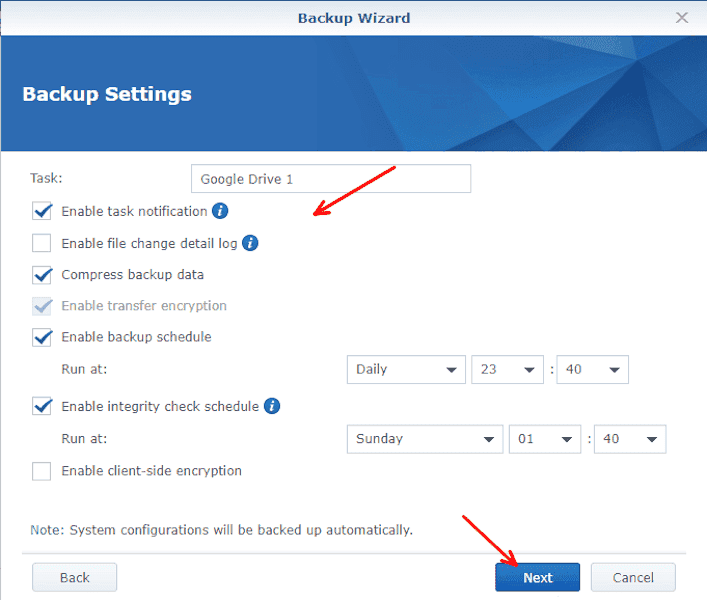
- Set Up a Backup Rotation
Finally, you can set how long backups are kept. Having more will give your data protection against things like ransomware attacks, as you can roll back the data before doing recovery. However, this will also take more space, so choose wisely unless you’re using one of the unlimited cloud storage options.
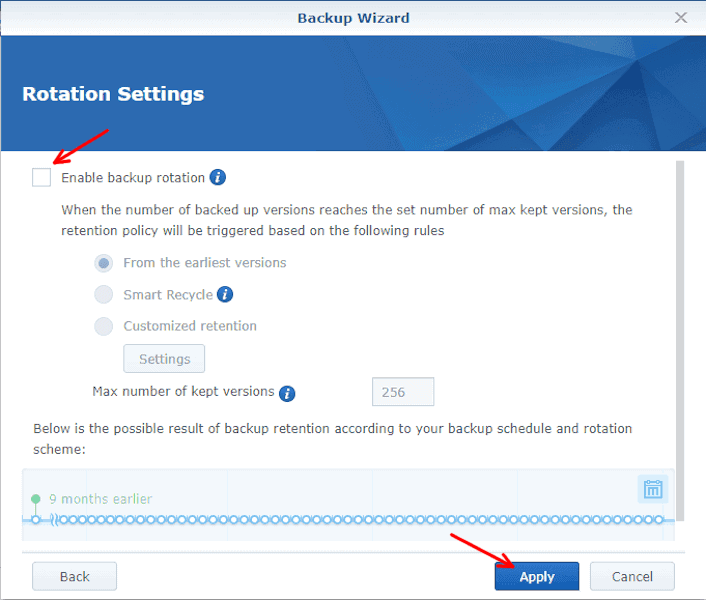
How to Backup NAS to Cloud Backup
If your NAS doesn’t have a backup manager or the cloud storage service you want to use isn’t compatible with the built-in software, you’ll have to make your NAS cloud backup with the cloud storage service itself. This varies depending on the service, but with our favorite backup service, IDrive (read our IDrive review), it’s done like this.
Your backup won’t be able to run if you need more storage in IDrive or you disconnect your computer from your NAS, including when the computer is turned off. Make sure your NAS capacity doesn’t exceed your IDrive storage allowance and that you use the computer regularly to ensure your NAS is backed up.
Final Thoughts
For any NAS user, a good backup is the best way to protect your data. This doesn’t mean the NAS is useless. Local storage is a vital part of the 3-2-1 rule, but when it’s this easy to back it up, there aren’t many reasons to put off making a copy of your data on the cloud.
If you’ve recently set up your NAS, read our article on making your NAS more secure, or if you’re looking for a backup service, our guide to unlimited online backup providers is a great place to start.
Do you use a NAS device? Have you tried to back it up before? Did these steps help you? Let us know your thoughts in the comments below. Thanks for reading.
FAQ
A NAS is one of the best local backups you can use. It can have data redundancy that external drives lack without an ongoing subscription to a cloud service.
While a NAS is a decent backup on its own, a good backup strategy should have a second backup in an offsite location.
NAS is a backup only when used in conjunction with other methods, such as NAS cloud storage. As NAS drives are vulnerable to failure, fires, floods and other disasters, many people would say that it isn’t a suitable way to prevent data loss on its own.
NAS backup software is anything that can take the data stored on a NAS device and copy it into cloud storage in case something happens to the original device.

